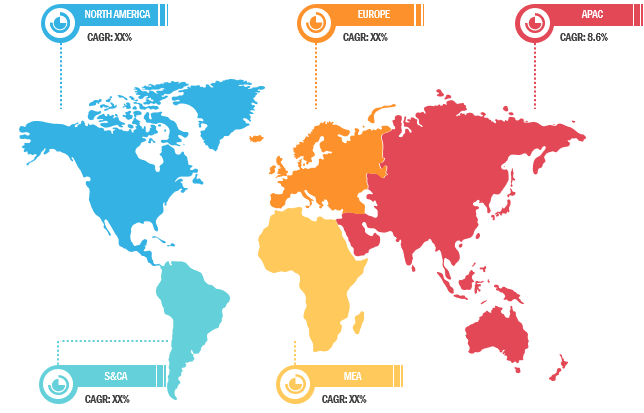$4450
$3560
The fixed-base operator market size is projected to reach US$ 41.49 billion by 2031 from US$ 25.55 billion in 2024. The market is expected to register a CAGR of 7.6% during 2025–2031. The soaring demand for hangaring services for large aircraft is likely to bring new trends in the market in the coming years.
Fixed-Base Operator Market Analysis
The increase in business aviation and leisure aviation is supporting the demand for FBOs to offer various services to travelers and enhance their traveling experience. The ongoing decline in the global aviation market because of the pandemic has led many FBOs to reduce their costs and lay off workers. In order to sustain through the pandemic, the FBO service providers have implemented initiatives including business expansion and partnering with other FBOs or ground handling companies. Such initiatives facilitate market players to continue their business. The growth in the number of airports across different regions is adding up new flight routes worldwide, leading to an increase in demand for new FBO operators across the new airports. The construction of new Greenfield airports is expected to propel the demand for new FBO operators across different regions. Also, the ongoing construction of Cukurova Airport in Turkey is expected to generate new opportunities for FBO market vendors during the forecast period.
Some of the major factors driving the growth of the FBO market worldwide are growing worldwide commercial aircraft fleet, rising air passenger traffic, and increasing number of airports worldwide. According to the Insight Partners analysis, the global commercial aircraft fleet stood at around 29,000 aircraft in January 2025, which is likely to reach around 38,300 aircraft by the end of 2035. Similarly, the global air passenger traffic stood at around 9.5 billion passengers in 2024, witnessing an increase of around 10% compared to the global air passenger traffic of 2023. Moreover, the air passenger traffic of 2024 was equivalent to 104% of the 2019 levels which shows a full recovery of pre-pandemic levels as well.
Fixed-Base Operator Market Overview
The global aviation industry is witnessing a sharp rise in the demand for hangaring services for large aircraft, driven by expanding fleet sizes, increased private jet ownership, and growing reliance on business aviation. The general aviation aircraft OEMs are developing new-generation aircraft with reduced fuel consumption, large size, and low noise and carbon emissions. The design of aircraft hangars is accordingly upgraded to suit the changing aircraft sizes and technologies. Modern aircraft hangars are being equipped with temperature control and security devices.
The Asia-Pacific (APAC) region is experiencing substantial growth in aircraft hangar infrastructure and Fixed Base Operator (FBO) services, supported by the expansion of commercial and private aviation. In 2024, Asia Digital Engineering (ADE), a subsidiary of Capital A, inaugurated a 380,000 square foot L-shaped maintenance hangar at Kuala Lumpur International Airport in Malaysia. The facility is designed to accommodate 14 narrow-body aircraft simultaneously, making it the largest aircraft maintenance hangar in Malaysia. ADE has announced plans for further development, including the construction of additional hangars in the vicinity and the evaluation of potential new sites to address increasing maintenance needs. Further, significant hangar infrastructure projects are underway or planned in cities such as Shanghai (China), Bali (Indonesia), and Sydney (Australia), highlighting continued investment in aviation support facilities across Asia Pacific.
The ban on Russian flights from European countries' airspace and vice-versa due to the ongoing war between Russia and Ukraine has reduced airline operations across the Russian airspace and other countries across Europe. This reduction is leading to a decline in the demand for FBO services and hampering the market growth across the region. Other regions have also been facing several geopolitical tensions, which is hampering aviation operations worldwide. For instance, the rift between China-Taiwan, India-Pakistan, China-India, India-Bangladesh, and Israel-Gaza has been acting as one of the major challenges for aviation operations worldwide.
Customize Research To Suit Your Requirement
We can optimize and tailor the analysis and scope which is unmet through our standard offerings. This flexibility will help you gain the exact information needed for your business planning and decision making.
Fixed-Base Operator Market: Strategic Insights

Market Size Value in US$ 25,194.55 Million in 2022 Market Size Value by US$ 37,177.46 Million by 2028 Growth rate CAGR of 6.7% from 2022 to 2028 Forecast Period 2022-2028 Base Year 2022

Naveen
Have a question?
Naveen will walk you through a 15-minute call to present the report’s content and answer all queries if you have any.
 Speak to Analyst
Speak to Analyst
Customize Research To Suit Your Requirement
We can optimize and tailor the analysis and scope which is unmet through our standard offerings. This flexibility will help you gain the exact information needed for your business planning and decision making.
Fixed-Base Operator Market: Strategic Insights

| Market Size Value in | US$ 25,194.55 Million in 2022 |
| Market Size Value by | US$ 37,177.46 Million by 2028 |
| Growth rate | CAGR of 6.7% from 2022 to 2028 |
| Forecast Period | 2022-2028 |
| Base Year | 2022 |

Naveen
Have a question?
Naveen will walk you through a 15-minute call to present the report’s content and answer all queries if you have any.
 Speak to Analyst
Speak to Analyst
Fixed-Base Operator Market Drivers and Opportunities
Expansion of Business Aviation Sector
Fixed-base operators (FBO) play a crucial role in handling aircraft and passengers, offering services such as fueling, maintenance, and flight planning. They are a vital part of the business aviation sector, providing essential ground services to private, corporate, and charter aviation. With the growth of the business aviation sector, FBOs are investing in technology and improving infrastructure to meet the evolving needs of the industry. A rising number of high-net-worth individuals, business leaders, and entrepreneurs across countries in North America, Europe, and Asia Pacific increasingly seek flexible and time-saving business aviation services. FBOs provide a seamless and efficient experience for business aviation users, allowing them to focus on their business goals. Private aviation offers quicker travel between cities, direct flights to smaller airports closer to destinations, and avoids commercial airline delays, saving hours on trips. It also permits flexible schedules to make the most of the time. As per the data published by the General Aviation Manufacturers Association (GAMA) in 2023, the business jet deliveries increased from 712 in 2022 to 730 in 2023. Further, the overall value of airplane deliveries in 2023 reached US$ 23.4 billion. Thus, the expansion of the business aviation sector due to the increasing demand for business jets bolsters the market growth.
High Potential for FBOs in Asia Pacific
Asia Pacific (APAC) presents a high growth opportunity for FBOs owing to flourishing business aviation and improving aviation infrastructure in the region. FBOs are witnessing significant momentum in Indonesia, Singapore, and Macau to address the increasing need for premium ground services. Currently, there are a total of 71 FBOs operating in APAC countries; of these, more than 20 are operating in Australia, whereas Mainland China has 15 FBOs. This number is anticipated to grow as high-net-worth individuals and corporations across APAC countries turn to private aviation for greater flexibility, efficiency, and connectivity. Thus, the need for premium ground services is becoming increasingly evident, leading to increased demand for fixed-base operators. Many new airports and upgrades to secondary airports to accommodate general aviation create opportunities for both international and local FBO operators to enter or expand in the market. As per the data published by the Association of Asia Pacific Airlines in February 2025, the region has witnessed strong growth in the international air passenger and cargo market. Asia Pacific Airlines carried ~365.0 million international passengers in 2024, a 30.5% rise from 2023. As per the data published by Airbus in 2024, Asia Pacific is expected to add approximately 10,000 new aircraft between 2024 and 2043. Therefore, increased airline traffic in APAC is likely to generate lucrative opportunities for the market.
Fixed-Base Operator Market Report Segmentation Analysis
The key segments contributing to the derivation of the fixed-base operator market analysis are services offered and application. Based on services offered, the fixed-base operator market is segmented into hangaring, fueling, flight instruction, aircraft maintenance, and aircraft rental. The fuelling segment held the largest market share in 2024. By application, the fixed-base operator market is segmented into business aviation and leisure aviation. The business aviation segment held a larger market share in 2024.
Fixed-Base Operator Market Share Analysis by Geography
The geographical scope of the fixed-base operator market report is divided into five main regions: North America, Europe, Asia Pacific, Middle East & Africa, and South America. North America accounted for the largest market share of 35.1% in 2024 and is projected to register a CAGR of 6.9% during the forecast period. High demand among customers and the widespread presence of fixed-base operator service providers in North America, especially in the US, boost the growth of the fixed-base operator market. APAC is projected to showcase tremendous demand for FBOs in the upcoming years, thus registering the highest CAGR during the forecast period; this is due to the significant growth in the general aviation segment, particularly in Australia, China, and Southeast Asian countries.
North America comprises the largest network of fixed-base operators worldwide. In recent years, there has been consistent growth in corporate flying and charter activity in the region, which is creating demand for general aviation services such as fixed-base operator services. Additionally, the US and Canada houses a number of general aviation airports, which enables a higher number of FBOs to operate across these countries. For instance, Teterboro Airport, Centennial Airport, and Van Nuys Airports are key airports with high concentration of FBOs. Also, the US consists of globally recognized FBOs such as Signature Aviation, Universal Aviation, Presidential Aviation, and Pentastar Aviation. The global recognition of these companies enables them to attract customers from different nations, thereby catalyzing their revenues year-on-year.
According to data released by Airlines for America, in 2023, commercial aviation accounted for 5% of the US GDP, i.e., US$ 1.37 trillion. In addition, the rising air passenger traffic and government initiatives to increase aircraft fleets in commercial aviation sectors fuel the demand for flight management solutions such as flight planning software.
Europe holds the second-largest share in the global fixed-base operator market. The presence of top players, such as Gama Aviation Plc., Lufthansa Technik FBO, and Luxaviation, is a key factor driving the market growth in Europe. Further, the constant growth of general aviation in the region is increasing the traveler's footprint on business jets/private jets for enhanced travel experience. General aviation comprises aircraft ranging from gliders to complex business jets with a complete range of high-value services, such as FBOs and business door-to-door transportation. The trends in Europe are shifting toward the need to carry out innovation and research to reduce environmental impacts.
In APAC, the fixed-base operator market is dominated by Australia and countries in Southeast Asia. By 2039, the Sydney airport is expected to manage more than 65 million passengers—over 408,000 airport movements—and 1 million tons of freight in the year. The government allocated US$ 8.4 billion from 2022 to 2026 for the development of Western Sydney Airport. Sustainability remains a focal point, with airports incorporating eco-friendly practices and renewable energy sources into their infrastructure. The rising demand for business aviation, along with increasing disposable income, is creating growth avenues for the companies operating in the market in these countries. In Southeast Asia, there is a strong presence of fixed-base operator networks, and demand for business and leisure aviation is also high in countries such as Singapore, Indonesia, the Philippines, and Malaysia. With the growing demand for business aviation services for enhanced travel experience in these countries, the adoption of FBOs is increasing. In Asia Pacific, the market growth has been primarily attributed to the rise in the expansion of aircraft fleets and airport infrastructure development. The International Air Transport Association predicted that 2.1 billion travelers are likely to travel by 2036, particularly in China. The increasing number of passengers is expected to fuel the demand for fixed-base operator services. This factor is expected to create growth opportunities for the key players operating in the market during the forecast period.
Fixed-Base Operator Market Report Scope
Fixed-Base Operator Market News and Recent Developments
The fixed-base operator market is evaluated by gathering qualitative and quantitative data post primary and secondary research, which includes important corporate publications, association data, and databases. A few of the developments in the fixed-base operator market are listed below:
- Atlantic Aviation announced it had acquired Ferrovial Vertiports from Ferrovial, a leading global infrastructure company. (Atlantic Aviation, Press Release, 2025)
- The Air Charter Safety Foundation (ACSF) is proud to announce that Avemex S.A. de C.V. has successfully renewed its Industry Audit Standard (IAS) registration, solidifying its commitment to the highest level of safety in aviation. (The Air Charter Safety Foundation, Press Release, 2024)
Fixed-Base Operator Market Report Coverage and Deliverables
The "Fixed-Base Operator Market Size and Forecast (2021–2031)" report provides a detailed analysis of the market covering below areas:
- Fixed-base operator market size and forecast at global, regional, and country levels for all the key market segments covered under the scope
- Fixed-base operator market trends, as well as market dynamics such as drivers, restraints, and key opportunities
- Detailed Porter’s Five Forces and SWOT analysis
- Fixed-base operator market analysis covering key market trends, global and regional framework, major players, regulations, and recent market developments
- Industry landscape and competition analysis covering market concentration, heat map analysis, market share analysis of prominent players, and recent developments for the fixed-base operator market
- Detailed company profiles

Report Coverage
Revenue forecast, Company Analysis, Industry landscape, Growth factors, and Trends

Segment Covered
Services Offered, and Application

Regional Scope
North America, Europe, Asia Pacific, Middle East & Africa, South & Central America

Country Scope
Argentina, Australia, Brazil, Canada, China, France, Germany, India, Italy, Japan, Malaysia, Mexico, Russian Federation, Saudi Arabia, South Africa, South Korea, United Arab Emirates, United Kingdom, United States
Frequently Asked Questions
1. Soaring Demand for Hangaring Services for Large Aircraft
2. Adoption of Advanced Technologies in Aviation Industry
1. Expansion of Business Aviation Sector
2. Contribution of Fuelling Services to FBO Service Business
The key players operating in the fixed-base operator market include Avemex SA De CV; DEER JET CO. LTD.; dnata; General Dynamics Corp; Jetex; Luxaviation; Signature Aviation Limited; Swissport; Abilene Aero, ExecuJet; Atlantic Aviation FBO Inc.; ExecuJet Aviation Group AG; and Universal Weather and Aviation, Inc.
The fixed-base operator market is expected to reach US$ 41,494.15 million by 2031.
The fixed-base operator market was valued at US$ 25,552.94 million in 2024; it is expected to register a CAGR of 7.6 % during 2025–2031.
The List of Companies - Fixed-Base Operator Market
- Avemex SA De CV
- DEER JET CO. LTD.
- Dnata
- General Dynamics Corp
- Jetex
- Luxaviation
- Signature Aviation Limited
- Swissport AG
- Abilene Aero
- Atlantic Aviation FBO Inc.
- ExecuJet Aviation Group AG
- Universal Weather and Aviation, Inc.
The Insight Partners performs research in 4 major stages: Data Collection & Secondary Research, Primary Research, Data Analysis and Data Triangulation & Final Review.
- Data Collection and Secondary Research:
As a market research and consulting firm operating from a decade, we have published many reports and advised several clients across the globe. First step for any study will start with an assessment of currently available data and insights from existing reports. Further, historical and current market information is collected from Investor Presentations, Annual Reports, SEC Filings, etc., and other information related to company’s performance and market positioning are gathered from Paid Databases (Factiva, Hoovers, and Reuters) and various other publications available in public domain.
Several associations trade associates, technical forums, institutes, societies and organizations are accessed to gain technical as well as market related insights through their publications such as research papers, blogs and press releases related to the studies are referred to get cues about the market. Further, white papers, journals, magazines, and other news articles published in the last 3 years are scrutinized and analyzed to understand the current market trends.
- Primary Research:
The primarily interview analysis comprise of data obtained from industry participants interview and answers to survey questions gathered by in-house primary team.
For primary research, interviews are conducted with industry experts/CEOs/Marketing Managers/Sales Managers/VPs/Subject Matter Experts from both demand and supply side to get a 360-degree view of the market. The primary team conducts several interviews based on the complexity of the markets to understand the various market trends and dynamics which makes research more credible and precise.
A typical research interview fulfils the following functions:
- Provides first-hand information on the market size, market trends, growth trends, competitive landscape, and outlook
- Validates and strengthens in-house secondary research findings
- Develops the analysis team’s expertise and market understanding
Primary research involves email interactions and telephone interviews for each market, category, segment, and sub-segment across geographies. The participants who typically take part in such a process include, but are not limited to:
- Industry participants: VPs, business development managers, market intelligence managers and national sales managers
- Outside experts: Valuation experts, research analysts and key opinion leaders specializing in the electronics and semiconductor industry.
Below is the breakup of our primary respondents by company, designation, and region:

Once we receive the confirmation from primary research sources or primary respondents, we finalize the base year market estimation and forecast the data as per the macroeconomic and microeconomic factors assessed during data collection.
- Data Analysis:
Once data is validated through both secondary as well as primary respondents, we finalize the market estimations by hypothesis formulation and factor analysis at regional and country level.
- 3.1 Macro-Economic Factor Analysis:
We analyse macroeconomic indicators such the gross domestic product (GDP), increase in the demand for goods and services across industries, technological advancement, regional economic growth, governmental policies, the influence of COVID-19, PEST analysis, and other aspects. This analysis aids in setting benchmarks for various nations/regions and approximating market splits. Additionally, the general trend of the aforementioned components aid in determining the market's development possibilities.
- 3.2 Country Level Data:
Various factors that are especially aligned to the country are taken into account to determine the market size for a certain area and country, including the presence of vendors, such as headquarters and offices, the country's GDP, demand patterns, and industry growth. To comprehend the market dynamics for the nation, a number of growth variables, inhibitors, application areas, and current market trends are researched. The aforementioned elements aid in determining the country's overall market's growth potential.
- 3.3 Company Profile:
The “Table of Contents” is formulated by listing and analyzing more than 25 - 30 companies operating in the market ecosystem across geographies. However, we profile only 10 companies as a standard practice in our syndicate reports. These 10 companies comprise leading, emerging, and regional players. Nonetheless, our analysis is not restricted to the 10 listed companies, we also analyze other companies present in the market to develop a holistic view and understand the prevailing trends. The “Company Profiles” section in the report covers key facts, business description, products & services, financial information, SWOT analysis, and key developments. The financial information presented is extracted from the annual reports and official documents of the publicly listed companies. Upon collecting the information for the sections of respective companies, we verify them via various primary sources and then compile the data in respective company profiles. The company level information helps us in deriving the base number as well as in forecasting the market size.
- 3.4 Developing Base Number:
Aggregation of sales statistics (2020-2022) and macro-economic factor, and other secondary and primary research insights are utilized to arrive at base number and related market shares for 2022. The data gaps are identified in this step and relevant market data is analyzed, collected from paid primary interviews or databases. On finalizing the base year market size, forecasts are developed on the basis of macro-economic, industry and market growth factors and company level analysis.
- Data Triangulation and Final Review:
The market findings and base year market size calculations are validated from supply as well as demand side. Demand side validations are based on macro-economic factor analysis and benchmarks for respective regions and countries. In case of supply side validations, revenues of major companies are estimated (in case not available) based on industry benchmark, approximate number of employees, product portfolio, and primary interviews revenues are gathered. Further revenue from target product/service segment is assessed to avoid overshooting of market statistics. In case of heavy deviations between supply and demand side values, all thes steps are repeated to achieve synchronization.
We follow an iterative model, wherein we share our research findings with Subject Matter Experts (SME’s) and Key Opinion Leaders (KOLs) until consensus view of the market is not formulated – this model negates any drastic deviation in the opinions of experts. Only validated and universally acceptable research findings are quoted in our reports.
We have important check points that we use to validate our research findings – which we call – data triangulation, where we validate the information, we generate from secondary sources with primary interviews and then we re-validate with our internal data bases and Subject matter experts. This comprehensive model enables us to deliver high quality, reliable data in shortest possible time.
Trends and growth analysis reports related to Fixed-Base Operator Market

Jun 2025
Airborne ISR as a Service Market
Size and Forecast (2021 - 2031), Global and Regional Share, Trend, and Growth Opportunity Analysis Report Coverage: By Platform (Piloted Aircrafts and Remote-Controlled Aircraft) and Application (Military and Defense, Homeland Security, and Commercial)

Jun 2025
Helicopter Hoists Winches and Hooks Market
Size and Forecast (2021 - 2031), Global and Regional Share, Trend, and Growth Opportunity Analysis Report Coverage: By Product Type (Cargo Hooks, Double Hooks, Specialized Hooks, and Hoists and Winches), Load Capacity (Below 1,500 lbs, 1,500–6,000 lbs, and Above 6,000 lbs), Application (Sling Load Operations/Aerial Work, Construction Operations, Firefighting Operations, Military Operations, Telecom Equipment Transportation, and Others), and Geography

Jun 2025
Aerospace Stainless Steel And Superalloy Fasteners Market
Size and Forecast (2021 - 2031), Global and Regional Share, Trend, and Growth Opportunity Analysis Report Coverage: By Material Type [Stainless Steel, Superalloy (A286, Inconel 718, Waspaloy, and Others)], Application (Airframe, Engine, Interior, and Others), Aircraft Type (Fixed Wing and Rotary Wing), Product Type (Screws, Rivets, Nut/Bolts, and Others), and Geography

Jun 2025
Military Antenna Market
Size and Forecast (2020–2030), Global and Regional Share, Trend, and Growth Opportunity Analysis Report Coverage: By Type (Aperture Antennas, Dipole Antennas, Travelling Wave Antennas, Monopole Antennas, Loop Antennas, Array Antennas, Others); Frequency (High Frequency, Very High Frequency, Ultra-High Frequency); Platform (Marine, Ground, Airborne); Application (Communication, Telemetry, Electronic Warfare, Surveillance, Navigation); and Geography

Jun 2025
Helicopter MRO Market
Size and Forecast (2020–2030), Global and Regional Share, Trend, and Growth Opportunity Analysis Report Coverage: By Component (Airframe Maintenance, Engine Maintenance, Component Maintenance, Line Maintenance); Helicopter Type (Light Helicopter, Medium Helicopter, Heavy Helicopter); End User (Commercial, Military); and Geography

Jun 2025
Airport Infrastructure Market
Size and Forecast (2020–2030), Global and Regional Share, Trend, and Growth Opportunity Analysis Report Coverage: By Airport Type (Commercial Airport, Military Airport, General Aviation Airport); Infrastructure Type (Terminal, Control Tower, Taxiway & Runway, Hangar, Others); and Geography

Jun 2025
Airport Fueling Equipment Market
Size and Forecast (2020–2030), Global and Regional Share, Trend, and Growth Opportunity Analysis Report Coverage: By Tanker Capacity (Below 5000 litres, 5000-20000 litres, Above 20000 litres); Aircraft Type (Civil Aircraft, Military Aircraft); Power Source (Electric, Non-Electric); and Geography

Jun 2025